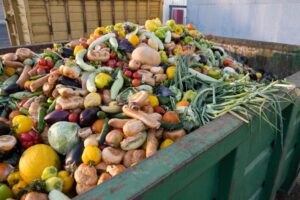- Cambridge, Mass-based startup Wild Microbes has raised $3.3 million in a pre-seed round to help unlock the potential of precision fermentation through the use of a gene-editing approach it claims can create superior production hosts.
- The round was led by Climate Capital, with participation from Freeflow Ventures, Agronomics, and Fall Line Capital.
Founded by Ben Kramer (COO) and Tim Wannier (CEO) in May 2022, the startup identifies ‘wild’ microbes with unique traits and rapidly domesticates them.
It uses a collection of genetic tools to domesticate and engineer strains of bacteria including recombineering—a form of gene editing—to create next-generation hosts for a wide range of ingredients produced in fermentation tanks.
Right now, Kramer tells AFN, a handful of microbial workhorses do the bulk of the work in this field, whereby microbes serve as mini-production factories to make everything from flavors, colors, sweeteners, and enzymes to ‘animal-free’ dairy proteins.
Developing the next generation of microbial hosts
From a regulatory perspective, there are advantages to using tried and trusted strains of yeast (Pichia pastoris, saccharomyces cerevisiae), bacteria (E. Coli) and fungi ( Trichoderma, Aspergillus Niger), he acknowledges.
But they are not necessarily the most efficient hosts for every ingredient, according to Wild Microbes.
“There are 1,000s of different microbial strains in a spoon of dirt,” points out Kramer. “And we use about six strains to make pretty much everything because we know how to, not because it’s what necessarily makes the most sense. We’re asking: what’s the perfect strain for each product?”
‘Bacteria is cheaper, easier, and faster to grow, but it’s hard to hit the right titers’
When you look at expression hosts, there are always trade-offs, so to get to a higher titer (more grams per liter of your target ingredient), the growth rate might be slower, for example, says Kramer.
“Bacteria is cheaper, easier, and faster to grow, but it’s hard to hit the right titers. What we’re saying is, let’s keep using the cheapest expression system, which is bacteria, but get the titer up. There’s a whole world of opportunity beyond the industrial E.Coli strains.”
“Tim was in the Church Lab at Harvard Medical School working on building better tools to engineer bacterial species that were often difficult to work with, and I was at Stanford Business School thinking about how to create a platform technology that would allow synthetic biology companies to scale faster. We met and felt there was a strong overlap.”
Enabling technology
Wild Microbes is interested in the precision fermentation protein marketplace, and is evaluating multiple market opportunities. says Kramer, who met Wannier through Nucleate, an entrepreneurship program founded by graduate students at Harvard University.
“If people come to us with products that they want to make, we can develop the perfect strain for them.”
In many cases, he says, partners may have already started making a given protein but need to hit certain titer requirements and don’t see a path to getting there with their current strain within a reasonable amount of time.
‘There are 1,000s of different microbial strains in a spoon of dirt, and we use six to make everything…’
If a microbe can survive at the bottom of the ocean, maybe it will do well in a million-liter fermentation tank
While microbes don’t naturally produce the specific molecules synthetic biology companies are seeking to make (you won’t find fungi that naturally make dairy protein), what Wild Microbes is looking for are strains with “a phenotype that makes them good for scaling,” he adds.
“So maybe it’s a strain that does really well under pressure because it survives at the bottom of the ocean, which might mean it could do well in a million-liter [fermentation] tank because it’s not going to die.
“We also look at things that will affect downstream processing, such as whether the protein is secreted.
“We can then use our custom genetic toolkit to develop new properties into target hosts. Recombineering, one of the company’s primary tools, works like an editable photocopier. Without cutting DNA, recombineering can make edits to the bacterial genome during reproduction without killing most of the cells.”
Gene editing: Patent filed for recombineering IP
As for IP, he says: “Tim is an inventor of gene editing technology covered by a patent application filed by Harvard University. We’re in negotiations with Harvard about the patent.”
The initial focus for the company is on protein manufacturing, he says. This includes animal proteins and industrial enzymes.
In some cases, he explains, potential partners might already be making a given protein using precision fermentation but need to hit certain titer requirements and don’t see a path to getting there within a reasonable amount of time.
Pros and cons of using new strains for precision fermentation
Going through the regulatory process with new microbial strains is more difficult, concedes Kramer.
“But we are careful to use strains from families without known pathogens and to find strains that secrete proteins.”
If microbes secrete proteins into the fermentation broth, it is less expensive to recover them, he said. If not, you have to break up the cells to get to the proteins, and risk getting fragments of the host microorganism in the final product unless you splash out on more expensive downstream processing.
“If they are secreted, for instance, there’s no DNA of the host organism in the final product.”
With that said, he claims, “the biggest risk for precision fermentation startups is not regulatory. It’s the ability to hit cost targets, so our value proposition is clear.”
Where Wild Microbes fits into the synbio landscape
Asked how Wild Microbes fits into the synbio landscape, Kramer says: “We’re asking the question: What’s the best strain in the world to produce your product? And then you can go work with other players to optimize it.”

















Sponsored
International Fresh Produce Association launches year 3 of its produce accelerator